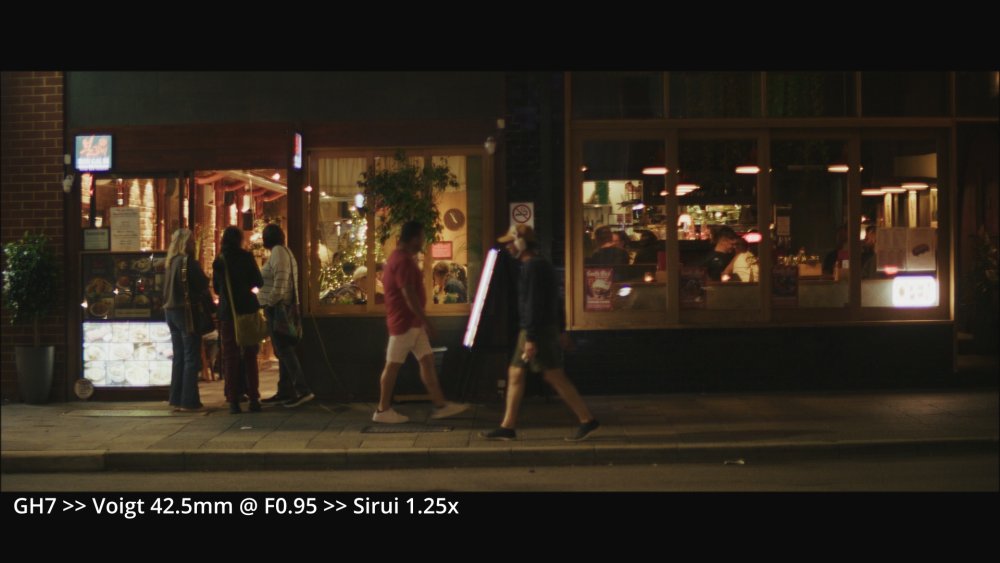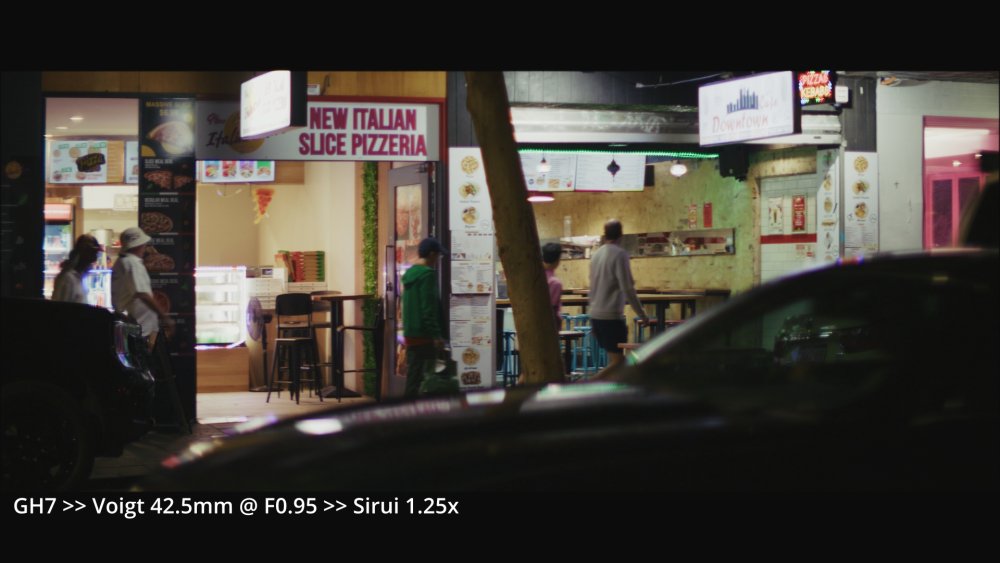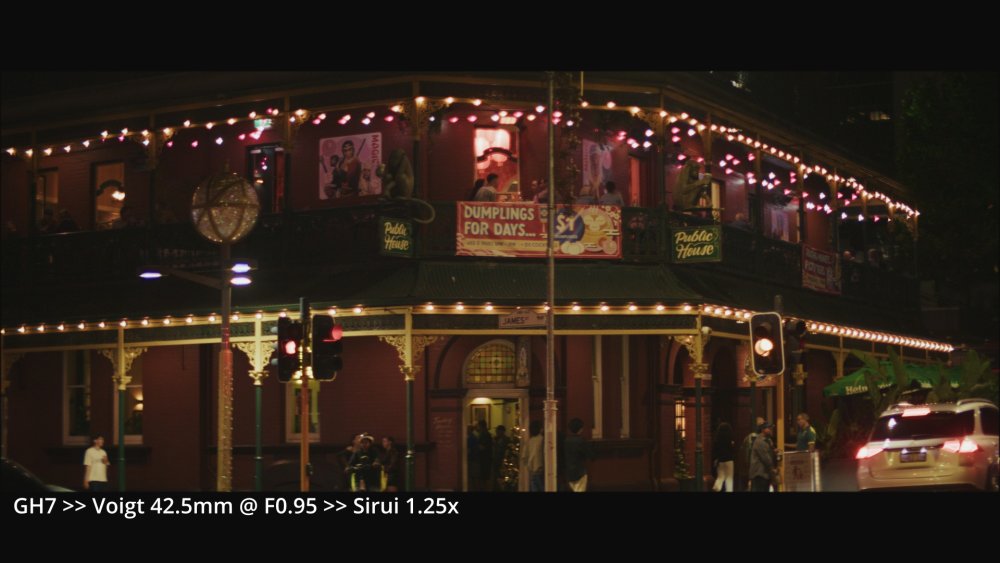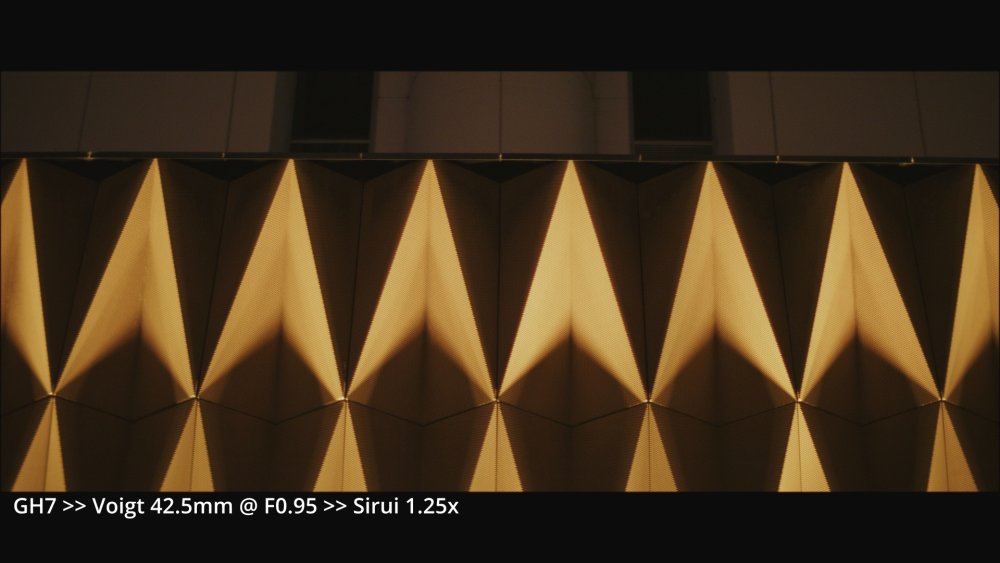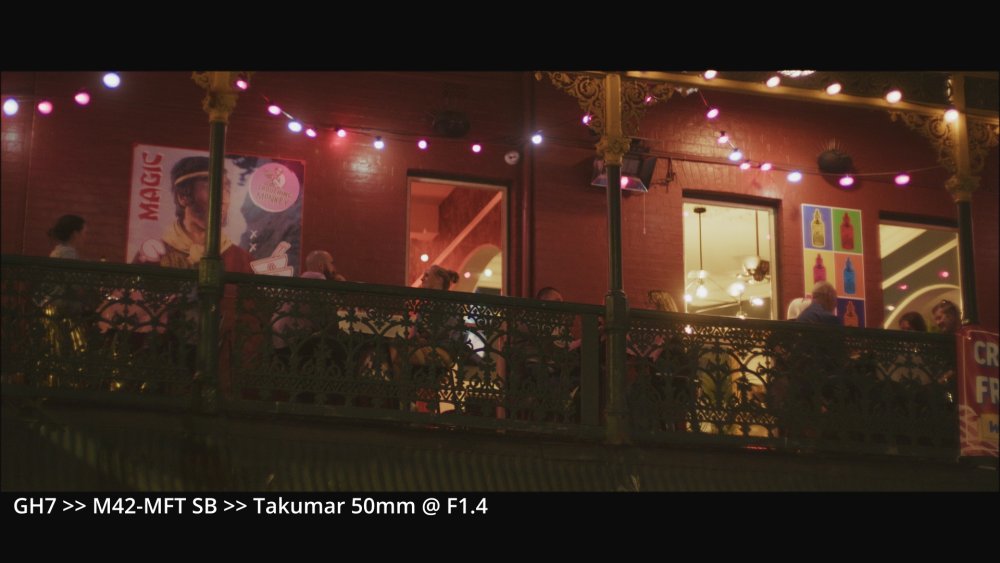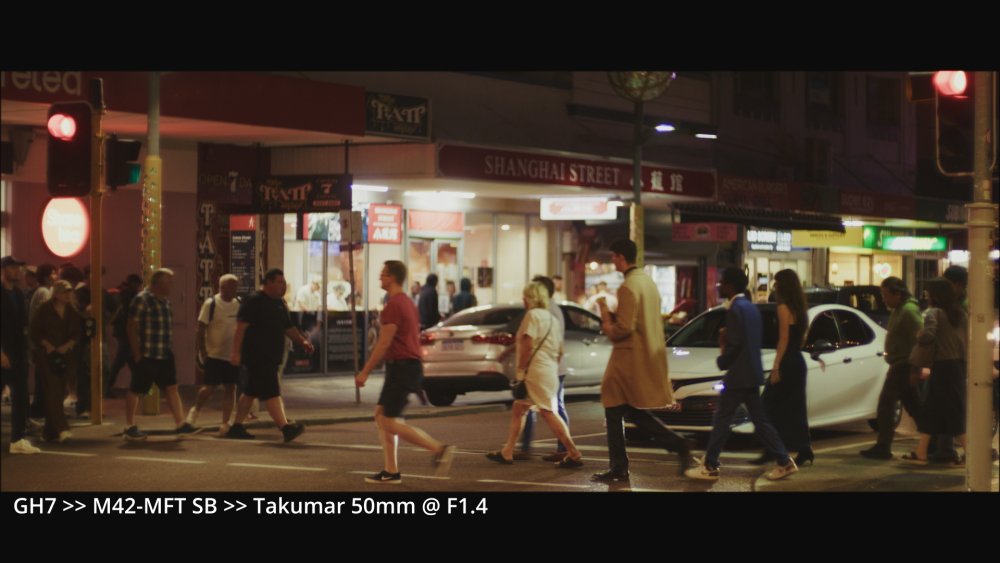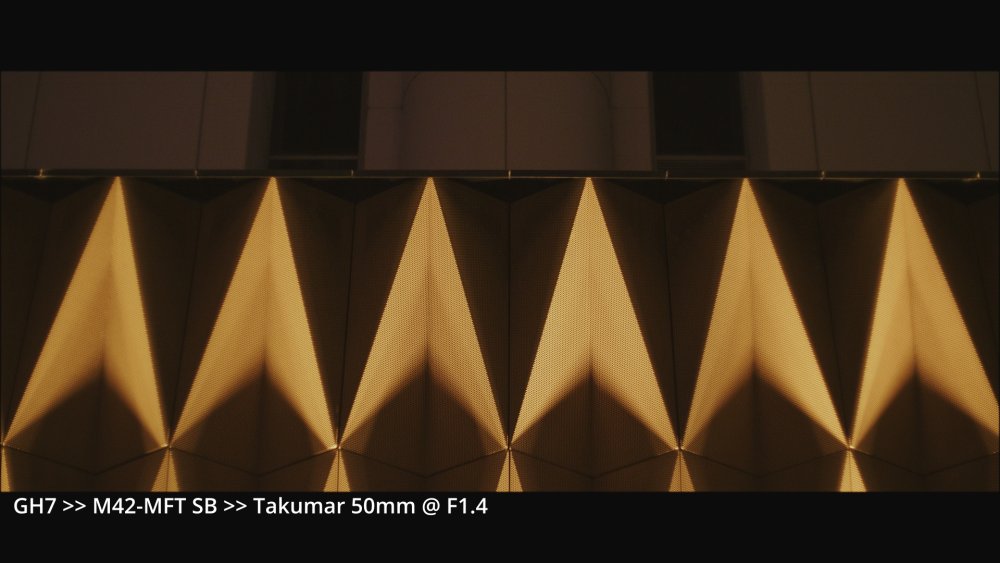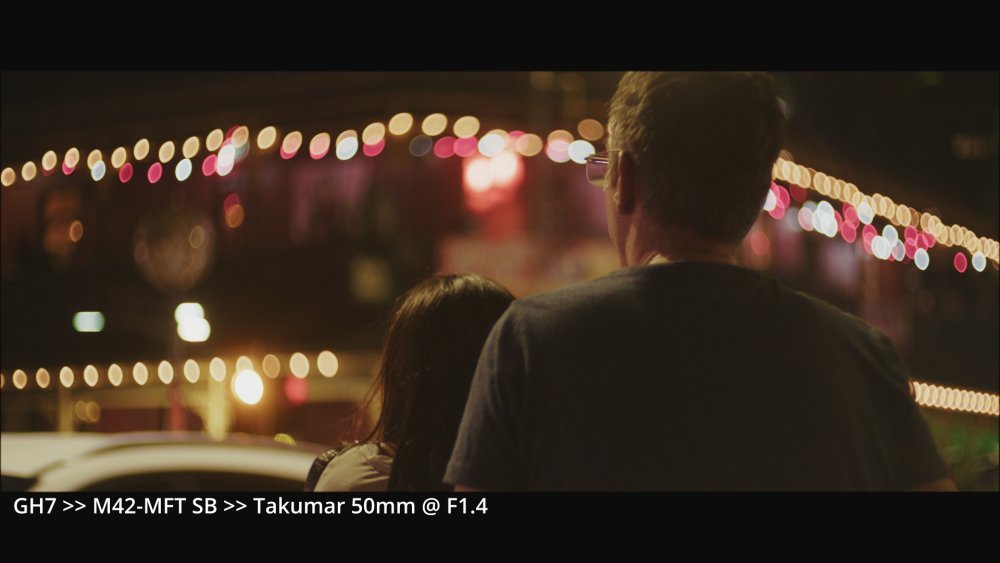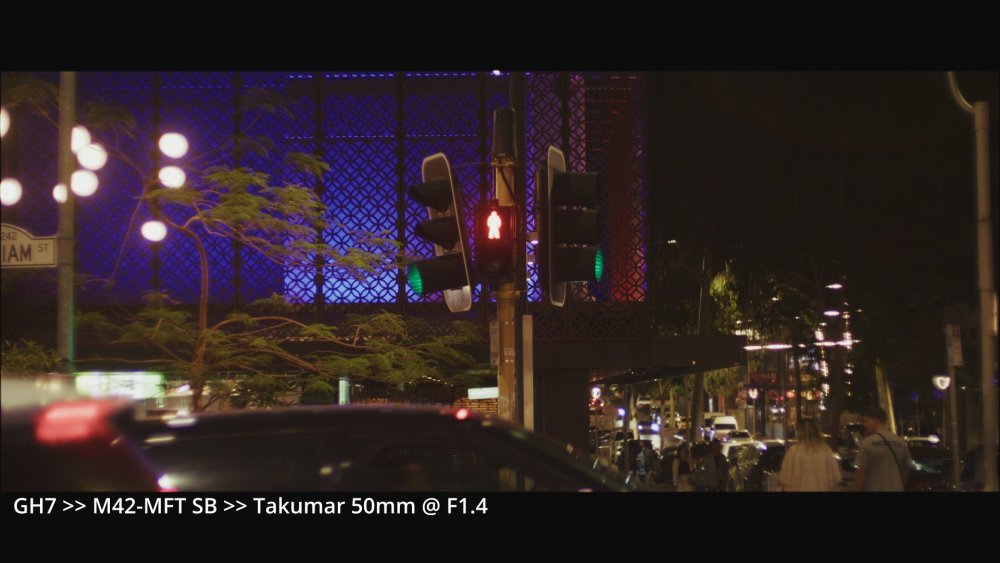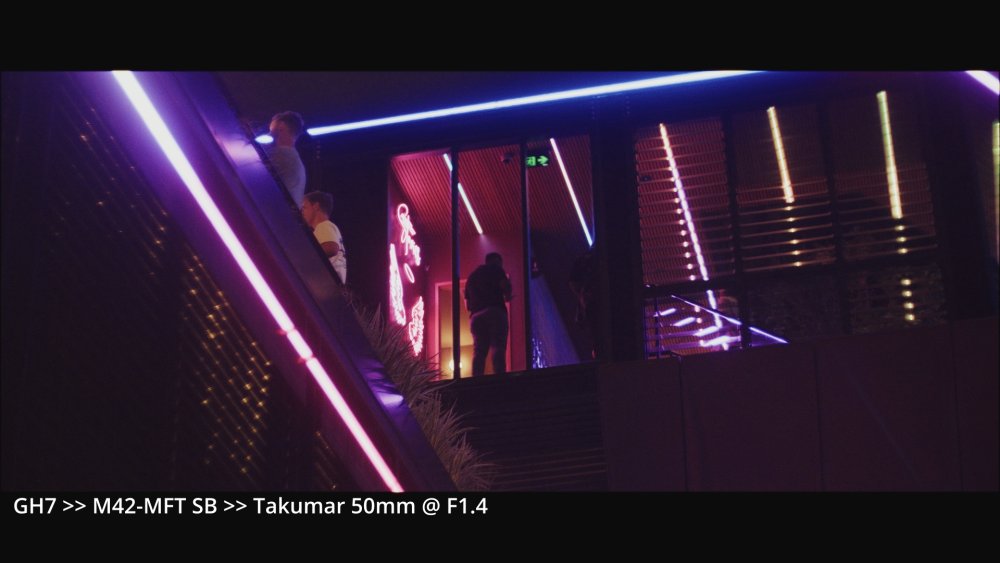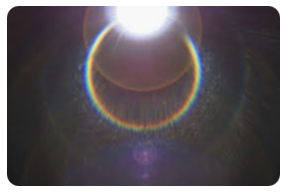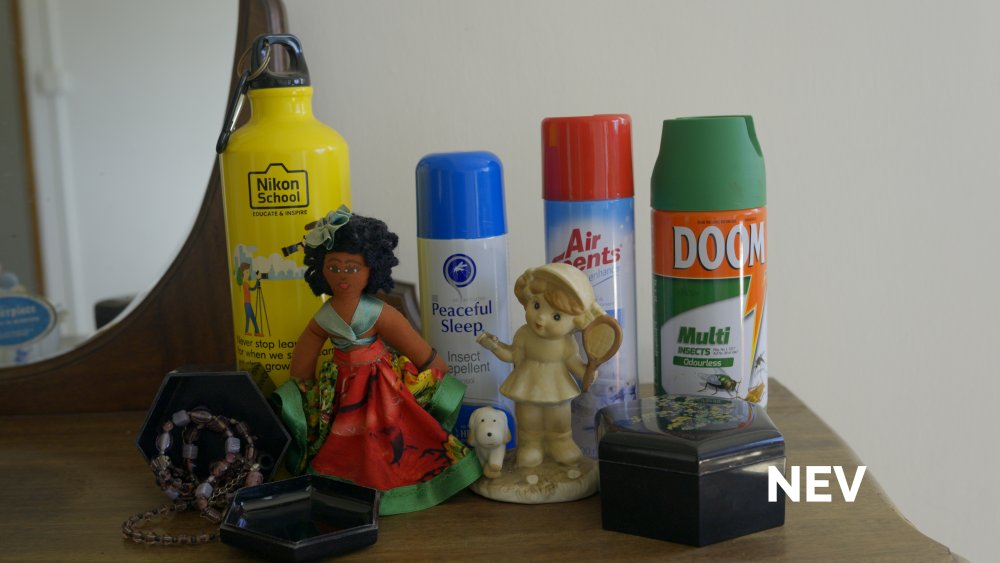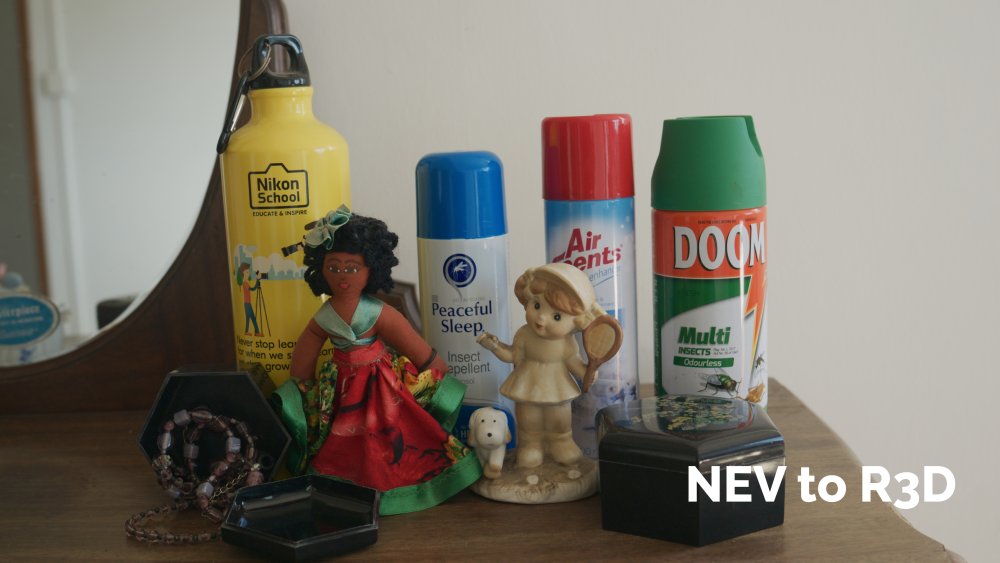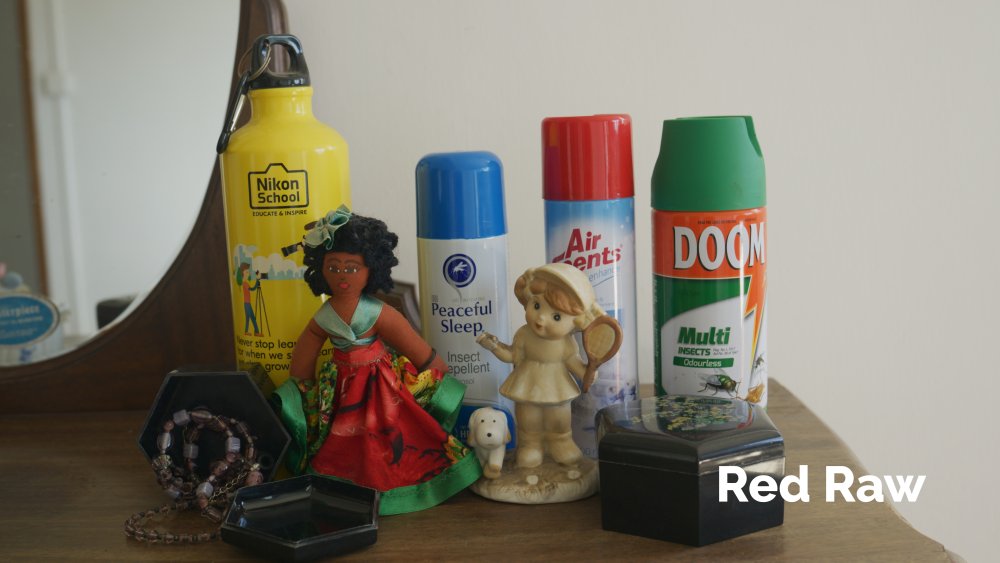All Activity
- Past hour
-

Amazing feature-film Magellan is shot on the Panasonic GH7
Davide DB replied to Andrew Reid's topic in Cameras
Read this: https://www.linkedin.com/posts/oceanfootagemastery_underwatercinematography-myoctopusteacher-activity-7396815155616989184-C-CD - Today
-

Amazing feature-film Magellan is shot on the Panasonic GH7
MrSMW replied to Andrew Reid's topic in Cameras
I think very few of us would know and even less care, what anything was shot on unless told. I do not know too much about the movie industry except that in Hollywood, it’s a massive racket of control, tradition and expectation whereas outside of Hollywood, filmmakers are saying fuck off to your control, tradition and expectation and making films with less kit, less bodies and far less BS. I suspect like all great empires, it’s had its day and is falling apart with something else taking over and that something else is the rise of the less controlled, less traditional, less expectation and almost a return to how it began with a more pioneering filmmaking style. I rarely go to the cinema these days and it’s even more rare for me to have even the slightest interest in any big budget movies because as has been mentioned, if they are not an over AI’d bunch of balls, so much is badly scripted, poor story, woke rubbish…made by companies who lack any passion for the craft and are simply about making as much money as possible. It’s not the camera and never really has been. One thing is for sure…I think…and that is the industry is not dead or even dying, just the structure of it is changing, coupled with the mass market viewing practices, but that is another topic and one I suspect we can’t get past. -
 eatstoomuchjam reacted to a post in a topic:
Anyone want to buy my Panasonic GH5S?
eatstoomuchjam reacted to a post in a topic:
Anyone want to buy my Panasonic GH5S?
-
Amazing feature-film Magellan is shot on the Panasonic GH7
newfoundmass replied to Andrew Reid's topic in Cameras
I think we learned long ago that the "camera" was one of the least important parts of telling a story. You can take an iPhone and create beautiful art if what you're filming is compelling, you are skilled enough, and the story you're telling is good. Frankly I'm surprised that we haven't seen more folks using mirrorless cameras, because if anything, they are overkill for a lot of films being shot today, especially ones that will never be seen on the big screen. My buddy made me re-watch Terrifier 3 since he just got into the series. It was filmed on an ARRI Alexa 35 using Panavision anamorphic lenses, but honestly, you never would've been able to tell if they'd shot it on a S1/H, S5/S5II, GH6/7, A7Siii, R5C, etc. and using any of the budget anamorphic lenses that have been released for these cameras. It's great to have an ARRI Alexa 35 and Panavision lenses, I can't really fault any low budget director using them if they have the opportunity to, but it didn't make the film any better and, no offense to the director and editor, but he wasn't skilled enough to get anything more out of using that camera and lenses than if he'd just used any mirrorless camera released in the last 5 years. -
 newfoundmass reacted to a post in a topic:
Amazing feature-film Magellan is shot on the Panasonic GH7
newfoundmass reacted to a post in a topic:
Amazing feature-film Magellan is shot on the Panasonic GH7
-
If you were in the US (I don't wish that on anyone currently) I'd take you up on it for sure! I've actually been itching to get back into M43, something I didn't foresee coming. I have no plans to get rid of my full frame Lumix cams, I'm still very happy with them, but I do very much miss those small lenses! I've also been looking at a camera that I can further help my nephew learn on, I think a more modern M43 would be great for him to learn on as he wants to try and help Uncle Adam! The funniest thing about getting a M43 camera is that the used prices have GONE UP since I left the system! LOL!
- Yesterday
-
Because I will do literally anything to avoid eBay, I am willing to let some of my favourite gear go for knock down prices. I have a mint GH5S which wants to find a good home 🙂 I also have a Nikon Zf if anyone is interested in some full frame Fuji-style shooting. This is loaded with my pre-release Fuji film styles for the Nikon Z mirrorless cameras. £500 should do it for the GH5S and the Nikon Zf price is negotiable. The stuff is in the UK - collect over coffee in the Peak District or Manchester. Or post within the UK or Europe. I'll be going back to Berlin soon. I also have a couple of compacts which wish to depart the crowded EOSHD HQ and go on a shoot. Canon G12 (CDD) and a Sony RX100 VA. Prices of those can be discussed below if you're interested!
-

Amazing feature-film Magellan is shot on the Panasonic GH7
Andrew Reid replied to Andrew Reid's topic in Cameras
The gatekeeper is talent. -

Amazing feature-film Magellan is shot on the Panasonic GH7
fuzzynormal replied to Andrew Reid's topic in Cameras
Thankfully, we're so far beyond the camera being the gatekeeper to accomplishing beautiful cinema. There's no real technical limitation affecting the cinema we see here. I've always been partial to portrait focal lengths because of what they take away from an image, but it's great to see more creative cinematographers shooting wide. Lubezki pretty much hangs out there most of the time. -
 sanveer reacted to a post in a topic:
Amazing feature-film Magellan is shot on the Panasonic GH7
sanveer reacted to a post in a topic:
Amazing feature-film Magellan is shot on the Panasonic GH7
-
 PannySVHS reacted to a post in a topic:
The D-Mount project
PannySVHS reacted to a post in a topic:
The D-Mount project
-
I really loved your video and enjoyed your lovely footage! @Henryo Thank you for sharing. You totally hit the point in regards to a highly desired pocket og II, with good battery life and a strong full hdmi. I would also vote for a much stronger IR cut filter. Great skills and bravery with your d-mountung. I wouldn't even dream to dare to do that! Great sounding voice and awesome narration btw!:)
-
 PannySVHS reacted to a post in a topic:
The D-Mount project
PannySVHS reacted to a post in a topic:
The D-Mount project
-
 PannySVHS reacted to a post in a topic:
The D-Mount project
PannySVHS reacted to a post in a topic:
The D-Mount project
-
 PannySVHS reacted to a post in a topic:
The D-Mount project
PannySVHS reacted to a post in a topic:
The D-Mount project
-
 PannySVHS reacted to a post in a topic:
The D-Mount project
PannySVHS reacted to a post in a topic:
The D-Mount project
-
 sanveer reacted to a post in a topic:
Amazing feature-film Magellan is shot on the Panasonic GH7
sanveer reacted to a post in a topic:
Amazing feature-film Magellan is shot on the Panasonic GH7
-
 PannySVHS reacted to a post in a topic:
ARRI closing up shop, needs a buy-out - maybe Sony?
PannySVHS reacted to a post in a topic:
ARRI closing up shop, needs a buy-out - maybe Sony?
-
Amazing feature-film Magellan is shot on the Panasonic GH7
PannySVHS replied to Andrew Reid's topic in Cameras
Thank you for sharing, Andrew. This is looking great. I will watch it as soon as they show it in the cinemas over here. I am still curious to test a GH5 MK II due to it been tested by slashcam for displaying great rendering of texture and offering one of the best 4K images of any dslms out there in that regard. Its optional 1.4 crop mode makes it a great digital 4K S16 cinema camera. GH7 in 4k pixel per pixel mode might be closer to 16mm crop though. I would love a M43 sensor sized lumix pocket cinema camera with flexible cropping, like S16 1:1.66, S16 4:3 with full Super16 width, 2/3" 1:1, you name it. And while you are at it, Panny please give it an internal ND and still keep the EVF and great battery life plus full size Hdmi.:) -
Looks fantastic. Any interviews with the cinematographer / crew out there? They used Panasonic GH7 + Lumix 12mm F1.4 for most part https://www.eoshd.com/news/in-ny-and-la-theatres-january-major-new-movie-magellan-is-shot-on-the-panasonic-gh7/
-
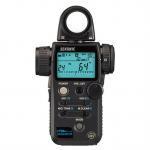
ARRI closing up shop, needs a buy-out - maybe Sony?
Emanuel replied to Andrew Reid's topic in Cameras
Quote it : ) Unfortunately, a truth of nowadays. Well stated :- ) -
Even mushy 1080p from the t2i looks better than 8K/12k except for DR. The best tech from the past 5-10 years is IBIS. Any new full frame cameras have good 1080p raw without a crop?
-
Dude, my infomercial will be future-proof! In 10 years, humans will evolve and they'll be able to see that 12k detail on their phones. Adapt or die, man!
-
I love 1080p footage. To make 4K look good, you have to throw all kinds of filters at it. I can’t even imagine 8K, let alone 12K — that’s just crazy territory. Even 4K already shows every skin pore, sucking all the magic out of the image. 1080p still hits that sweet spot where the detail supports the story. Hyper-sharp 4K, 8K, and 12K just end up turning the story into “look how ugly that person is.” The narrative goes in one ear and out the other. I can’t help wondering if there’s some level of collusion between computer manufacturers and camera companies. What if 1080p was always “good enough”? That would be a huge let-down. Why buy a new computer if a 10-year-old one can do just as well — aside from saving ten minutes on an export? Granted, with a 12K sensor, I imagine moiré would disappear for good, giving you an incredibly clean 1080p file if the downsampling is done properly.
-
I think in any given time window, a truly good movie is a rare thing. It's not that there are no good films being currently made, rather we remember those old films which left a lasting impression on us, and tend to forget those films which were not good. For films made in the 1980s and 1990s we remember the very best ones. For films made in the 2020s we are more likely to remember the latest ones we saw. High image quality (be it high dynamic range or resolution) cameras don't make things worse in terms of the quality of the outcome but it may be that they motivate the production to aim for greater perfection in some sense and then not realize that technical perfection is not necessarily a worthy goal on its own if it leads to losses in other areas, such as the story and dramatic intent. I think visual aesthetics have been changing with the ubiquity of the mobile phone camera and the kind of processing that phone manufacturers apply to the images by default and also the kind of post-processing that people apply to their images in instagram etc. People who have grown up on these devices are used to the auto-HDR AI look and they may think that kind of a look is normal and looks good. Cinema cameras that capture high dynamic range allow that kind of post-processing to be applied, but they also allow other options; it is how they are used that is important. As camera and TV (particularly streaming) resolution has been increasing, it is possible that to get technical perfection, the producers think all the actors need to be really beautiful with perfect skin etc. as they are shown in such great fine detail in the movie. Post-processing edits to how skinny models look in magazine covers or online, and fixing of imperfections in plastic surgery por post-processing also have lead to new aesthetics which is like a race that got out of hand, leading to ever less realistic photographs and movies. If they process everything to look a tone-mapped fake HDR image with local tonal variations everywhere and no contrast between the different elements in the scene, and all the characters are super perfect then there is a huge disconnect with reality. Classical films often had rough characters along with the beautiful, which made things look realistic even if the lighting was hard and stylized (by necessity, as the film material required a lot of light, so hard lights were used and there had to be intent). Actual HDR technology can help avoid the tone-mapped HDR look and have shadows dark all the while showing details (preserving the global contrast between parts of the image). However, how this technology is used is up to the people making the movie, of course. I have to admit that most of my favorite movies were shot on film, although I do like several which were shot on digital. I don't think shooting on film per se makes those movies look good but it may be that the filmmakers were able to choose an aesthetic (by film and lighting and costume choices etc.) and hold creative control over it with a more firm hand when using traditional techniques. This could also be why camera manufacturers have been adding "looks" and "grain" baked into the footage as options recently. They can help to lock in a certain look and the added grain prevents excessive mucking up with the image in post-processing. However, to me this seems like less than an ideal solution which would be for the team members to communicate and understand the intent and work together to achieve it. I notice there is no agreement as to what look is good online, people will have wildly differing opinions on such topics. Thus it is up to us as viewers to select our favorites and enjoy them rather than hope that every new movie follows the same aesthetics. This will never happen, of course, as there are so many opinions.
-
The thing is, not many people use the Alexa 35, those who know will get fantastic result. DR is the one thing that was missing from digital in the filmlook as film already had great DR. Resolution for sure is just too much. I don't want to shoot more than 4k, or at worst 6k to reframe a little bit. But it is already stretching it.
-
My Takumar 50mm F1.4 arrived and I took it out to compare it with the Voigt 42.5mm F0.95 with Sirui 1.25x adapter setup. The Voigt+Sirui is equivalent to 68mm F1.5 and the Takumar+Speedbooster is equivalent to 71mm F2.0, so a bit longer and a bit slower. In order to avoid changing lenses all the time, I did a little lap with the Voigt+Sirui, then did another lap with the Takumar and re-created the compositions from the first lap (as well as grabbing other shots too). These images have had a film-emulation applied, and have had exposures matched, but no other changes, so things like contrast and WB etc should be the same. My impressions: Voigtlander is softer at F0.95 than the Takumar at F1.4 I haven't compared them with the Voigt stopped down, but I'd probably rather get a bit more subject separation than sharper images. The extra sharpness of the Takumar makes the focus peaking a lot easier to use when using the screen (using the EVF you can see what is in focus but the monitor you need peaking on) The focus ring on the Takumar is a lot looser (not that damped but not too loose either), but of course it's backwards The extra width of the Voigt is apparent. It makes me wonder if the Speedbooster is a little less boosting than I claimed. The Sirui has a lot of coma on the edges (stretching light sources horizontally) so the bokeh seems more horizontal than vertical on lights, whereas the Tak seems to have a zoom-blur sort of effect which is a bit odd The Tak has slightly lower contrast (hard to see but I noticed it when trying to match exposures) In addition to those, I also grabbed these with the Takumar: Swirly bokeh! and it's not a Helios!! It has a nice halation/glow but the ghosts from the light sources are real. This is something I am thinking a lot about because I find them to be very distracting. Seems sharp at the edges at closest focus. The bokeh is confusing - sometimes with bubbles and sometimes not. I actually find that the response to light sources in this lens is very complicated - sometimes it stretches along the spokes of a wheel and other times along the rim of the wheel. Also something I noticed but isn't really visible in stills is that light sources pointed straight at the camera have a flare that's like a loop, like this, which can look pretty distracting too. My conclusions are: The focus being lighter and peaking being more obvious makes it a bit easier and faster to use, so much so that I changed my process to where I'd adjust the vND, then hit record and then focus in the 2s it takes the GH7 to begin recording The size and weight difference is significant and I found I was able to shoot people from a lot closer with it than the Sirui The small size and weight mean it's a no-brainer to pack on trips where I'm reluctant to pack the Voig/Sirui combo Next is to test it with an oval insert to get some stretched bokeh. As a proof of concept it certainly looks promising.
-
People fight over who has closer DR and latitude to Alexa 35, then apply a LUT that drops the DR to 6 stops to look like Heat 1995.
-
Here's my dumb-ass-getting-older-by-the-second-opinion: In an era where some people are starting to look back at 80's and 90's films while saying, "Why don't movies look as good as that anymore"? I'm not eager to jump into the high-resolution-hyper-DR-fray. The best looking film I ever made was in 1080p on consumer cameras before I really was trying to do a hell of a lot with color grading. There's GOT to be a push back at intense IQ realism in cinema sooner or later, right? Right? Ah, wtf do I know?
-
8K sampled from 12K should be really good 8K and it's basically how you'd get 4:4:4 quality from a bayer sensor. If the FX8 specs are as-rumored, it could be a real hit. Though if Sony try to sell it for $6K+, it'll be a really hard sell. If they don't, it'll be cool to see the prices drop on their existing camera line-up.
- Last week
-
ARRI closing up shop, needs a buy-out - maybe Sony?
Danyyyel replied to Andrew Reid's topic in Cameras
A couple of years ago, I was saying on Forums that Arri would fail, and people were calling me stupid. Ohhh its image is so special, etc etc how peasants could understand this. But the problem is you can't sell a lot of 70-100 000 usd cameras, the market is what it is, even more so when you have very capable cameras coming for much less. You reach a level where that 5% more cannot justify the 10, 20x the price. Before you had the highend market where camera cost/rent is peanuts compared to the overall cost, but that secondary market, the people that used to rent those highend cameras, can now buy a camera that will do 90% of what they need, and will rent only 10% of what they used to do. Arri and most US/german companies are going to be eaten by the Chinese ones. They still live in the rental business, for camera and other gears light lighting etc. The principal of the Chinese is that they will produce affordable equipment for the many, that will help them also produce for few highend that they will sell. You will find Aperture/Godox/Nanlight models that will cost less than a hundred dollars, to 4k led light costing more than 10 000 USD. They will sell a thousands of the 300 USD 300 watt cob monolight, for perhaps every 10 000 USD 5000 watt one. But those thousands of 300 USD lights will help them for R&D for those big lights. same for camera, imagine if Arri had repackage the original Arri LF in a more affordable casing, taking out some features of frame rate and sell it for 10K. They would be selling thousands of them, perhaps at the detriment of their higher ends, but those thousands of 10k models would overall bring so much money. -
Probably because it wasn't ready for the Burano, time and technology marches on. A future Fuji GFX camera with a 12K sensor is an appealing prospect though. Full frame sweet spot I think is 8K.
-

ARRI closing up shop, needs a buy-out - maybe Sony?
Andrew Reid replied to Andrew Reid's topic in Cameras
I just think it's a form of culture rot and US cinema will go down with the ship. The west is in decline and it's time for China to take over at the top of the world order, and that includes cinema. Better start learning Mandarin. -
There's something about that 33 megapixel sensor. It's a sweet spot. It also helps to shoot with manual WB as the Sony AWB doesn't just dial in the Kelvin it does a wild green/magenta bias depending on the light, and gets it wrong sometimes. But the underlying image is REALLY good, if you don't mind a bit of occasional rolling shitter.
-
For now as a Nikon shooter, I am more inclined to shoot NRAW and do the renaming trick to R3D, than to shoot R3D as I am finding that the Nraw has more DR than the R3D and you can shoot the normal version that takes only about 370 mbs for 24 fps in 4k and 700 mbs for 6k. This is a little test of conversion of Nev to R3D. You have NEV (Nikon RAw), NEV but using the RED lut, Then the Nev to R3D renaming and finally the REDraw file. then So I need to make a little bit more test, with skin tones etc, but they are quite close to me, even more so that even between the different red cameras like the Raptor and Komodo, their is some color difference. The yellow are a little bit more saturated and the image is a little more toward yellow in the Nikon ZR redraw R3D files. On side by side test the ZR was the more yellowish of the red camera. So it might balance out in the end.




